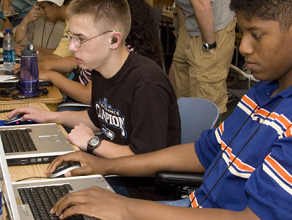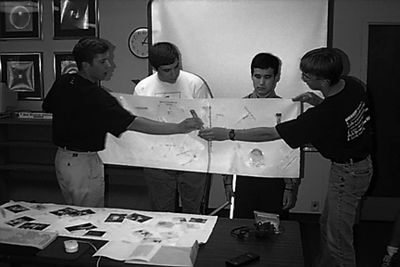Ethical and Legal Issues
Providing an appropriate education to all students can be argued on ethical grounds. For some people, however, legal mandates are more convincing. Federal legislation requires that students with disabilities have access to appropriate educational opportunities.
The publications Working Together: Faculty and Students with Disabilities and Working Together: K-12 Teachers and Students with Disabilities provide short overviews of legal rights and responsibilities and examples of accommodation strategies at postsecondary and precollege levels, respectively.
View the videos Working Together: Faculty and Students with Disabilities and Building the Team: Faculty, Staff, and Students Working Together and read the publications Working Together: Faculty and Students with Disabilities and Working Together: K-12 Teachers and Students with Disabilities to learn about how students with disabilities can work with K-12 and college instructors in order to achieve success.
Section 504, ADA

According to Section 504 of the Rehabilitation Act of 1973, "no otherwise qualified individual with a disability shall, solely by reason of his or her disability, be excluded from the participation in, be denied the benefits of, or be subjected to discrimination under any program or activity of a public entity." This idea is also included in the Americans with Disabilities Act (ADA) of 1990. Both K-12 and postsecondary education institutions are covered entities with respect to this legislation.
So what exactly does "person with a disability" mean? "Person with a disability" means "any person who has a physical or mental impairment which substantially limits one or more major life activities including walking, seeing, hearing, speaking, breathing, learning, and working; has a record of such impairment; or is regarded as having such an impairment."
Disabilities covered by legislation include but are not limited to spinal cord injuries, loss of limbs, multiple sclerosis, muscular dystrophy, cerebral palsy, hearing impairments, visual impairments, speech impairments, specific learning disabilities, head injuries, psychiatric disorders, diabetes, cancer, and AIDS. The examples listed here are conditions that may limit the ability of people to perform certain tasks. Some of these conditions are readily apparent; some are invisible.
IDEA
A requirement of the Individuals with Disabilities Education Act of 1990 (IDEA) and the 2004 Individuals with Disabilities Improvement Act (IDIA) is that K-12 students with disabilities be educated in the least restrictive environment and, to the maximum extent appropriate, with students who do not have disabilities. Over the past few years, there has been a steady increase in the number of students with disabilities placed in general education classrooms. Not all students covered under Section 504 and the ADA are covered under IDEA. Those who are covered under IDEA have Individualized Education Plans (IEPs) that specify modifications to their educational programs.

Tip: Legal and Ethical Issues
While teaching a course for preservice or inservice teachers, make participants aware of legal mandates that require them to provide an appropriate education for all of their students, including those with disabilities. It is also important that participants understand that providing full access to instruction is the right thing to do.
When teachers work with students who have disabilities in their classes, they should talk with them about how their disabilities affect their learning and performance and discuss accommodation options. These students are (or should be becoming) experts on their disabilities. Including them in the accommodation process will help them develop skills that are essential as they transition to self-determined adult lives.
Accommodations
Students who have conditions with the same diagnosis may have very different abilities when it comes to performing specific tasks. For example, one student who has cerebral palsy may have difficulty walking. For another student, cerebral palsy may result in no functional use of her hands and voice. Ultimately, a student who has a disability requires alternative arrangements only when faced with a task that requires a skill that the disability precludes.
A teacher should not assume that a student who has a disability cannot successfully participate in the course simply because of the disability. Instead, the teacher and student, together with parents, support staff, and other professionals, should anticipate what course activities may be problematic and determine which strategies and resources are available to minimize barriers and maximize participation. Sometimes an effective solution can be found by thinking creatively about how the learning environment can be modified. Involving precollege students in this process helps them develop self-advocacy skills and prepares them for leading self-determined adult lives.
Inclusion of students with disabilities in the general education classroom offers both a challenge and an opportunity for educators.